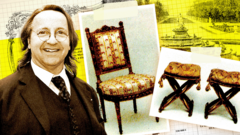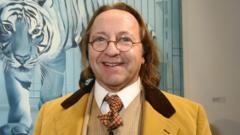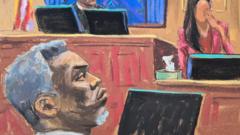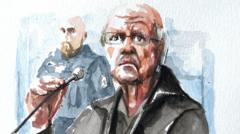In the early 2010s, the French antiques scene was rocked when a duo of craftsmen allegedly passed off a pair of extravagant chairs, purported to have belonged to Marie Antoinette, as authentic 18th-century treasures. Stamped with the insignia of esteemed cabinetmaker Nicolas-Quinibert Foliot, these chairs were quickly dubbed "national treasures" by the French government under Versailles’ recommendations. Despite a hefty price tag, they eventually found a new home with Qatari Prince Mohammed bin Hamad Al Thani for a staggering €2 million (£1.67 million).
Over the years, other items allegedly tied to the French monarchy emerged, including various pieces linked to royal figures such as Madame du Barry and Princess Élisabeth. Most were subsequently acquired by Versailles for its museum collection. However, the revelation in 2016 that these prized chairs were mere fakes sent shockwaves through the national antiques community and led to a widespread investigation.
The fraud came to light after French authorities scrutinized the affluent lifestyle of a middleman involved in the sale of these replicas. The investigation traced back to renowned French antiques authority Georges “Bill” Pallot and distinguished cabinetmaker Bruno Desnoues, who faced legal repercussions for their deceitful practices, including fraud and money laundering.
As a scholar known for his expertise in 18th-century furniture, Pallot had previously authenticated items for various institutions, including Versailles, leveraging trusted relationships to fuel his and Desnoues' fraudulent activities. The pair's intricate method involved sourcing and crafting fake items by mimicking originals, often adding false historical stamps to enhance their authenticity.
During court proceedings, it was revealed that the duo capitalized on Pallot's expert status, fostering an elaborate ruse that reportedly netted them profits exceeding €3 million. They marketed their fakes through established galleries, with some pieces finding their way to auction houses like Sotheby's.
While Pallot and Desnoues admitted to their roles, a gallery director, Laurent Kraemer, and his establishment faced accusations of negligence for selling the fakes without adequate verification. In defending against charges, Kraemer stated that he too was duped by the prestigious credentials and the supposed authenticity of the items.
Legal experts and prosecutors called for tighter regulations within the art and antiques industries to prevent similar occurrences, highlighting that even established authorities like Versailles had been misled. The trial serves as a cautionary tale of trust broken within the world of high-stakes antiques, where deception can overshadow even the most revered institutions.
As the case unfolds, the legacy of these false furnishings leaves an indelible mark on France's cultural heritage, emphasizing the necessity for vigilance and authenticity in the antiques trade.



















